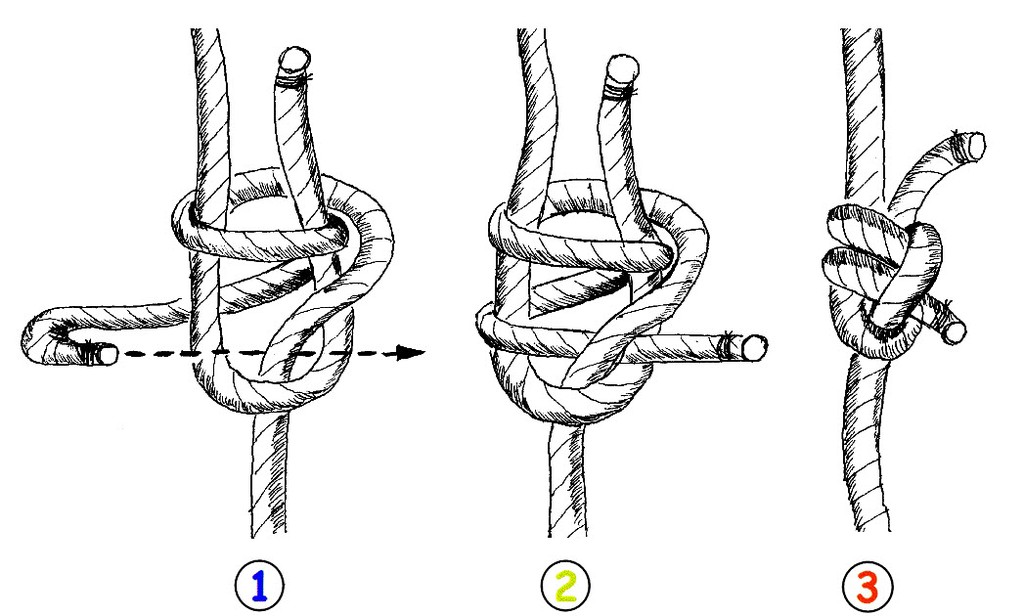Sailing Knot secrets - Tie the mighty 'King of Joinery'
by Captain John Jamieson on 5 Sep 2012

Join two lines together with the double-becket bend (also called a "double sheet bend"). Take care to bunch the turns up to make it tight and secure. (illustration from "Seamanship Secrets") Captain John Jamieson
http://www.skippertips.com
Imagine that you find you need a twenty foot spring line to dock your boat in a stiff wind. And you have just a collection of shorter lengths of line left aboard. What is the solution? John Jamieson (Captain John) here offers an answer:
You dig in the sail locker and find you have two shorter lines--one an old Genoa sheet and the other a short length of three-strand nylon. Which sailing knot would be the right choice for the job? Add this powerhouse sailing knot to your list of 'best knots to know' aboard your small sailboat today!
Anytime you join one line to another, you want a knot that will hold under a shock load. Think of any line like a rubber-band. Boat wakes, tidal rise and fall, and wind gusts push and pull on your line.
Choose Your Joinery Method.
You have many choices, but two are easy to tie, easy to remember and can be made fast and secure. You could use the common bowline.
Tie a bowline in one line; pass the other line through the eye and tie a second bowline. This makes a strong, secure way to join two lines. But you will need a lot of line (small bowlines will take about 12' of each line) and you'll end up with two bulky knots in the line instead of one.
Your second choice--the double-becket bend (also called a double-sheet bend)--makes a strong, compact knot. It's often used to join two lines of unequal diameter, but you can use it to join two lines of equal diameter too.
Follow these three easy steps to success:
1. Make a Teardrop
Form an upside down teardrop (or raindrop) shape with the larger of the two lines--or one of two lines if they're the same diameter. Hold the teardrop in your non-dominant hand with the fat part of the drop facing down (first illustration).
2. Pass the Becket
Pull the other line (or the smaller line) through the back of the teardrop and bring several inches toward you. Form a loose loop on one side of the teardrop. Pass the line around the back of the teardrop and through the loop. Do this twice (second illustration).
3. Cinch Up the Knot
Make your knot tight and compact. Pull on both standing parts and bitter ends a bit at a time. You want the knot to stay put under surge or shock load (third illustration).
Every sailing skipper needs to know the best sailing knots that will give him or her the triple benefit of security, compactness, and reliability. Use the well-tested double-becket bend to join two lines together the next time you find yourself near the end of your rope!
John Jamieson (Captain John) with 25+ years of experience shows you the no-nonsense cruising skills you need for safer sailing worldwide. Visit his website at www.skippertips.com for a free issue of the highly popular 'Captain John's Sailing Tips' newsletter. Discover how you can gain instant access to hundreds of sailing articles, videos, e-Books and more!
John Jamieson is also the author and illustrator of the book 'Seamanship Secrets' published by International Marine / McGraw-Hill.
If you want to link to this article then please use this URL: www.sail-world.com/101739